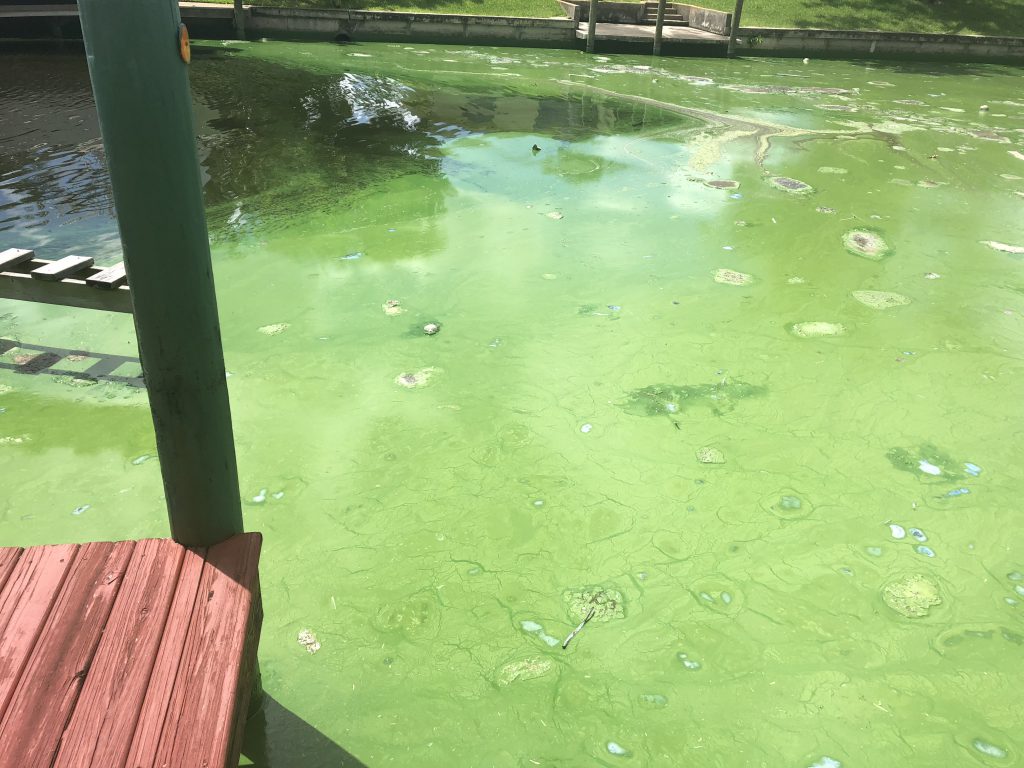
Improve Water Quality with Beneficial Bacteria
Beneficial bacteria occur naturally in lakes and ponds and are the microbes responsible for processing dead organic material. There are many different types of bacteria, which work in different ways to break down organic compounds. Aerobic bacteria use oxygen and rapidly break down organic compounds. Anaerobic bacteria are able to work without oxygen but work much more slowly. Both types of bacteria produce enzymes that allow them to break down organic compounds and take them into their cells as nutrients. Many bacteria also perform denitrification, transforming nitrate into nitrogen gas and removing it from the pond system. They can also convert soluble phosphorus from the water column into calcium phosphate and calcium iron phosphate, which are insoluble minerals that are not available to most types of pond algae.
How Nutrients Fuel Algae Growth
Since the bacteria convert nutrients into unavailable forms, it helps improve water quality. When water quality is more balanced, it can reduce nuisance algae blooms in lakes and ponds. In freshwater, phosphorus is generally the limiting nutrient for algal growth. The ratio of nitrogen to phosphorus determines the types of algae that will grow and thrive in a pond. In situations where there is excess phosphorus, nuisance species of filamentous and blue-green algae (cyanobacteria) will dominate the waterbody instead of the beneficial planktonic green algae that form the base of the food web. The bacteria themselves can also contribute to the food web, becoming a food source for zooplankton and benthos, which then become food for fish and other organisms.
How Beneficial Bacteria Work in the Water
Biochemists have found ways to culture beneficial bacteria so that they can be added to lakes and ponds to accelerate the decomposition process and remove nutrients from the aquatic system. This process is often referred to as biological water quality augmentation. Initially, a large inoculation dose is added to get the bacterial population established, and then maintenance doses are applied to ensure that the bacteria continue to thrive. As the bacteria grow and replicate, they tie up phosphorus and nitrogen in their cells so that it is not available to nuisance algae. The majority of the bacteria will go to the bottom and sides of the lake (the benthic and littoral zones) where they break down excess organic matter. Some of the bacteria remain in the water column, where they process dead phytoplankton and soluble nutrients.
Year-Round Nutrient Management with Biologicals
There are many different types and formulations of beneficial bacteria. Most product formulations are based on aerobic bacteria and target compounds that are slow to degrade. SOLitude uses bacteria products in our Annual Maintenance programs for organic waste degradation and general water quality improvement. We can also supplement these products with a formulation of bacteria and enzymes that is specifically geared towards digesting the organic matter that builds up on the pond bottom – this process is known as biological dredging. Some of the enzymes are even targeted to break down specific compounds, such as the cellulose found in leaves and sticks that accumulate in the pond. While this process does not address the build-up of inorganic soil particles, it can greatly increase pond depths while decreasing the amount of organic bottom sludge. However, the results can vary greatly between waterbodies and cannot be predicted with any accuracy. Biodredging programs can differ widely in scope, and the species composition and colony forming units (CFUs) of bacterial formulations are typically considered proprietary information. There is currently no industry standard to provide uniform guidelines, so it is important to develop a program that is tailored to the water quality conditions and budget limitations of each site.
It is significant to note that because most beneficial bacteria formulations include aerobic bacteria, they work much better when used in conjunction with pond aeration. Bacterial metabolism is optimized when dissolved oxygen levels are maximized, so a floating fountain or aerator will greatly improve the overall results of any water quality augmentation program.
Discover the Benefits of Nutrient Remediation
SOLitude Lake Management is a nationwide environmental firm committed to providing sustainable solutions that improve water quality, enhance beauty and preserve natural resources.
SOLitude’s team of aquatic scientists specializes in the development and execution of customized lake, stormwater pond, wetland and fisheries management programs. Services include water quality testing and restoration, algae and aquatic weed control, installation and maintenance of fountains and aeration systems, shoreline erosion control, muck and sediment removal and invasive species management. SOLitude partners with homeowners associations, golf courses, private landowners, businesses and municipalities. SOLitude Lake Management is part of Rentokil, a leading business services company, operating across the United States, Canada and Puerto Rico.
For more information, visit SOLitude Lake Management at solitudelakemanagement.com, and connect on Facebook, LinkedIn and Twitter.












